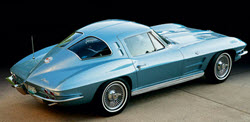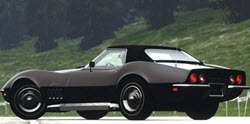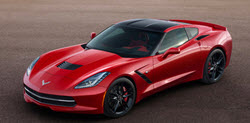The performance breakthroughs of the Corvette C5 (1997–2004).
The Advent of the Corvette C5
The Chevrolet Corvette C5, produced during the years spanning from 1997 to 2004, marked a pivotal era in the progress and maturation of this iconic American sports car. Representing the fifth generation in the Corvette lineage, the C5 introduced a series of engineering and design enhancements that set new benchmarks for performance, handling, and comfort. These attributes were notably advanced when compared to its predecessors.
Engineering Innovations
One of the most notable innovations introduced with the C5 was the all-new LS1 V8 engine. This 5.7-liter powerplant was a significant step forward for Chevrolet, delivering an impressive 345 horsepower. The engine was highly regarded not only for its raw power but also for its efficiency and reliability. Its introduction marked a departure from previous small-block engines and played an instrumental role in establishing the C5’s reputation for performance excellence.
Additionally, the C5 utilized a novel transaxle layout, which entailed relocating the transmission to the rear of the vehicle. This strategic change in configuration dramatically improved the weight distribution of the car, leading to enhanced handling and stability on the road. The adoption of a hydroformed box frame was another critical modification in the C5, contributing increased rigidity to the chassis without adding significant weight. This adjustment further optimized the vehicle’s dynamic capabilities and offered improved structural integrity.
Performance Breakthroughs
The Corvette C5 became renowned for its remarkable acceleration capabilities and top-speed potential. Thanks to its innovative design and engineering solutions, the C5 was able to achieve a 0-60 mph time of just over 4 seconds. This performance metric was particularly impressive, as it allowed the C5 to stand toe-to-toe with many European sports cars from the same era known for their speed and agility. When it came to top speed, the C5 demonstrated its prowess by reaching nearly 175 mph, proving its competitiveness in the high-performance sports car market.
Suspension and Handling
The suspension system of the C5 was another area where the model set itself apart. Featuring a sophisticated short/long-arm setup, the system provided superior agility and responsiveness, contributing significantly to the overall driving experience. As the generation evolved, later models of the C5 were equipped with magnetic selective ride control, a technology that allowed for real-time adjustments to the suspension settings. This feature provided drivers with an exceptional level of control and comfort, regardless of the road conditions encountered.
Aerodynamics
Aerodynamics played a crucial role in the design and efficiency of the Corvette C5. Utilizing advanced computational modeling techniques, designers sought to minimize both drag and lift. These efforts resulted in a vehicle capable of maintaining stability and delivering superior performance, especially at higher speeds. The improvements in aerodynamics also made the C5 more fuel-efficient than its predecessors, showcasing a holistic approach to sports car design that balanced power with practicality.
Technological Comforts
Beyond its raw performance, the C5 offered a suite of technological features that enhanced the driving and ownership experience. The interior of the C5 was more luxurious and thoughtfully designed, incorporating refined materials and state-of-the-art electronics for its time. Features such as the head-up display projected vital information onto the windshield, allowing drivers to keep their eyes on the road while monitoring their vehicle’s systems. Moreover, the active handling system provided an additional layer of safety and performance, emphasizing Chevrolet’s commitment to blending high performance with modern conveniences.
Conclusion
In summary, the Chevrolet Corvette C5 represents a significant chapter in the history of American sports cars. The model demonstrated substantial innovation and improvement over its predecessors through its combination of a powerful LS1 engine, advanced chassis and suspension design, and cutting-edge technology. The C5 set new standards and benchmarks for what an American sports car could accomplish, garnering acclaim from enthusiasts and industry experts alike. By redefining the expectations and capabilities of the Corvette line, the C5 solidified its place as a distinguished model in the annals of automotive history. This pivotal era in Corvette’s evolution illustrates how thoughtful engineering and design can propel a vehicle to new heights of performance and prestige, embodying the spirit and potential of American automotive craftsmanship.



